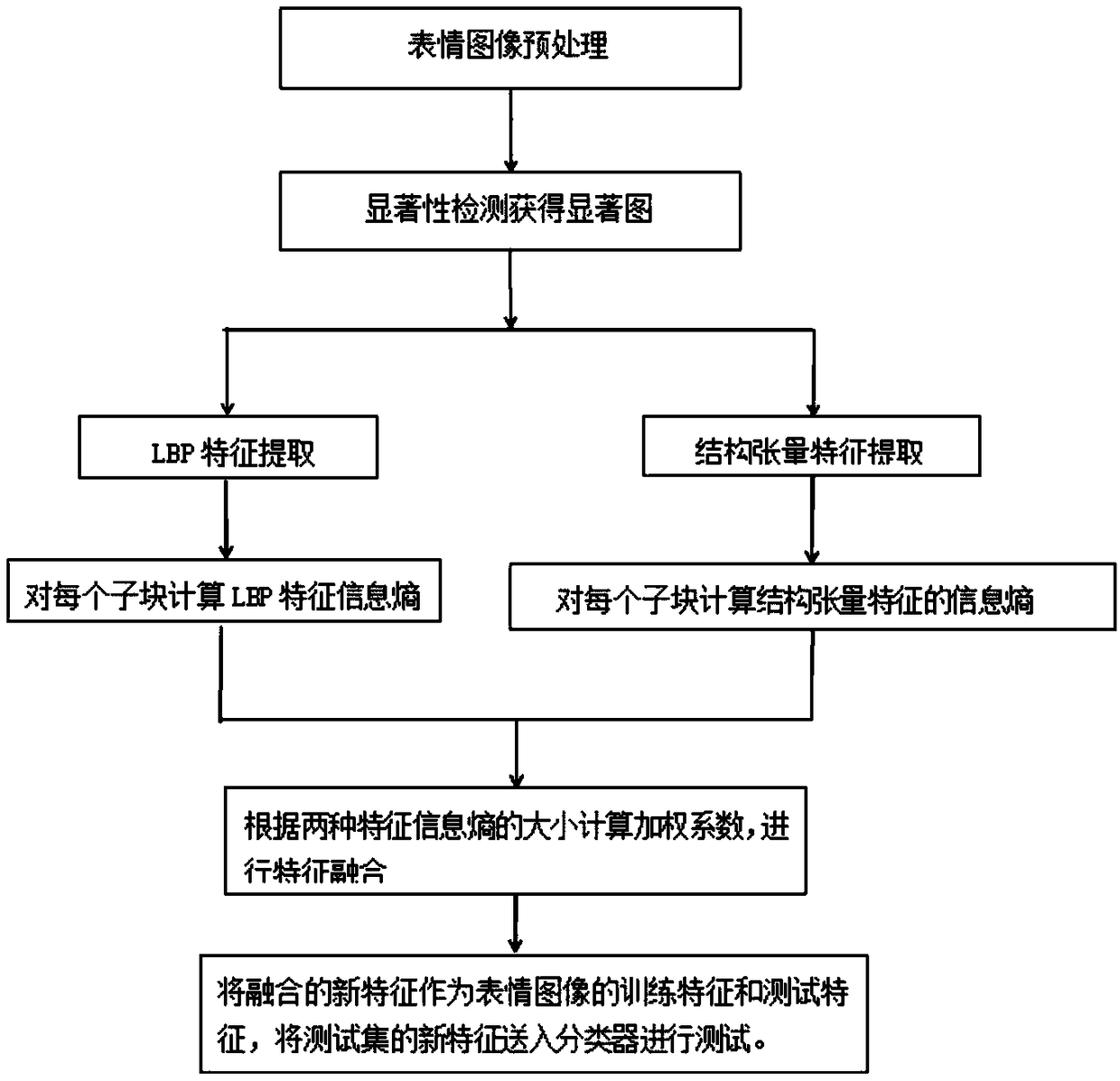An expression recognition method based on adaptive weighted fusion of significant structure tensors and LBP features
An adaptive weighting and structure tensor technology, which is applied in the field of image processing and computer vision, can solve the problems of inaccuracy, memory consumption, and failure to find, etc., and achieve the effects of suppressing noise, improving recognition rate, and enhancing texture information
- Summary
- Abstract
- Description
- Claims
- Application Information
AI Technical Summary
Problems solved by technology
Method used
Image
Examples
Embodiment 1
[0047] An expression recognition method for adaptively weighted fusion of saliency structure tensor and LBP features, such as figure 1 shown, including the following steps:
[0048] S1: Data preprocessing. In the expression database, different expression images are selected to form the training set and test set, and then the snake and GVF models are used to extract the pure face area of the expression image, and the hair, ears, neck, background and other information that interfere with expression recognition are removed. Finally, scale normalization is performed on the image, and the rendering is shown in Figure 2(a).
[0049] In this example, the JAFFE expression library is selected as the experimental data. The expressions in the library are divided into seven types: anger, disgust, fear, happiness, sadness, surprise, and neutral expressions. In this example, 10 images of each type of expression are selected to form a test set, and the rest are used as a training set. I...
PUM
 Login to View More
Login to View More Abstract
Description
Claims
Application Information
 Login to View More
Login to View More - R&D
- Intellectual Property
- Life Sciences
- Materials
- Tech Scout
- Unparalleled Data Quality
- Higher Quality Content
- 60% Fewer Hallucinations
Browse by: Latest US Patents, China's latest patents, Technical Efficacy Thesaurus, Application Domain, Technology Topic, Popular Technical Reports.
© 2025 PatSnap. All rights reserved.Legal|Privacy policy|Modern Slavery Act Transparency Statement|Sitemap|About US| Contact US: help@patsnap.com



